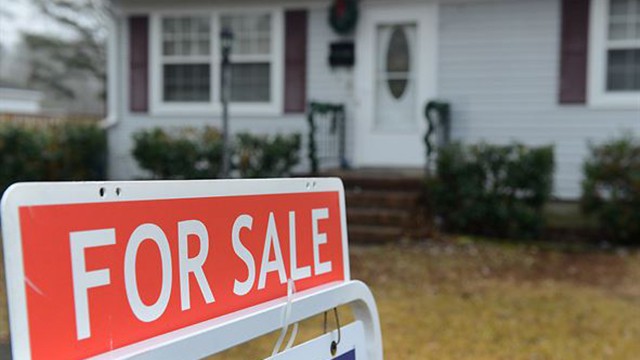Here’s How Much You’ll Have to Spend to Buy a House in Brampton
Published November 6, 2018 at 6:31 pm

If you’ve been silently (or not-so-silently) praying for a housing crash in the GTA (as this
If you’ve been silently (or not-so-silently) praying for a housing crash in the GTA (as this survey indicates some of you are), you might be unhappy to hear that the housing market is going strong in Brampton and surrounding cities.
The Toronto Real Estate Board (TREB) recently announced that GTA realtors reported 7,492 sales through TREB’s MLS system in October 2018 – a six per cent increase compared to October 2017.
While sales were down by one per cent compared to September 2018, TREB says the average sale price for October 2018 was up 3.5 per cent on a year-over-year basis to $807,340. TREB also says that after preliminary seasonal adjustment, the average selling price was up one per cent compared to September 2018.
The MLS Home Price Index (HPI) composite benchmark was up by 2.6 per cent compared to October 2017.
Condos and low-rise houses are growing in value, effectively driving price upwards.
“Annual sales growth has been positive since the late spring. While the OSFI stress test and higher borrowing costs have kept sales below 2016’s record pace, many households in the Greater Toronto Area remain upbeat on home ownership as a quality long-term investment,” says Garry Bhaura, president, TREB.
“A strong regional economy and steady population growth will continue to support the demand for housing ownership as we move into 2019.”
There were 14,431 new listings entered into TREB’s MLS system in October 2018 – down 2.7 per cent compared to October 2017.
“It’s been a month of growth in the Halton and Peel regions, as the latest data released by the Toronto Real Estate Board reveal sales are up robustly from September,” says Penelope Graham, managing editor, Zoocasa.
“Though numbers remain well below the record-breaking conditions seen in the 2016 market, these increases indicate the impact from the Ontario Fair Housing Plan – a set of new market-cooling policies introduced last spring – is starting to subside.”
As far as Brampton goes, Zoocasa says the market is faring well.
There are stronger market conditions all around for Brampton real estate, with sales clocking in at 685, a 10.8 per cent increase from September, and up 5.3 per cent from 2017, Zoocasa says.
According to real estate company, prices have followed suit, up to an average of $701,133 (up 1.4 per cent month-over-month and 4.7 per cent year-over-year).
Zoocasa says new listings shrank to 1,285, a hefty 7.3 per cent drop from last month, and 10 per cent from last year, though the market remains firmly balanced at a sales-to-new-listings ratio of 53 per cent.
In terms of numbers specific to the entire GTA, a detached house in the 905 currently costs about $914,179 (up from $905,722 in September). A semi costs about $659,622 (a little down from last month’s average price of $661,907), towns are selling for $621,564 (up from $600,947) and condos are costing buyers about $461,013 (up from $455,686 in September).
In a recent Zoocasa blog post, the real estate company says semi-detached homes and condos are hot sellers.
“Semi-detached homes saw the greatest increase in sales throughout the total TREB region, up 12.7 per cent, with 774 sold. That’s followed by condo sales, which increased 7.5 per cent to a total of 2,177 units changing hands,” Zoocasa says.
“Detached home sales clocked in at 3,328 – a 7.1-per-cent increase, while townhouses remained relatively flat at 1,154 sales (+0.8 per cent).”
While the housing market is showing signs of balance, experts worry about a persistent lack of inventory (simply put, supply is failing to keep up with demand).
“Annual sales growth has outstripped annual growth in new listings for the last five months, underpinning the fact that listings supply remains an issue in the Greater Toronto Area,” said Jason Mercer, TREB’s director of market analysis
“With municipal elections in the rear view mirror, all levels of government need to concentrate on policies that could remove impediments to a better-supplied housing market, including facilitating the development of a broader array of medium density housing choices.”






